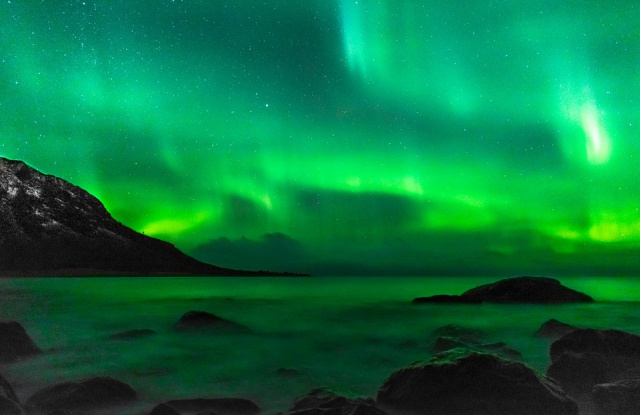
OHIO – Solar activity will bring storms that are usually not visible in Ohio this week
The Northern Lights, also known as the Aurora Borealis, are a natural phenomenon that occurs in the polar regions of the Earth. They are a result of interactions between the Earth’s magnetic field and charged particles from the Sun.
Here’s how the Northern Lights are formed:
1. Solar Activity: The Sun constantly emits a stream of electrically charged particles called the solar wind. Occasionally, the Sun experiences intense solar eruptions, such as solar flares or coronal mass ejections (CMEs). These events release a large amount of charged particles into space.
2. Earth’s Magnetic Field: The Earth has a magnetic field that extends from its core into space. This magnetic field deflects most of the charged particles from the Sun away from the Earth. However, near the polar regions, the magnetic field is weaker, allowing some of the charged particles to enter the Earth’s atmosphere.
3. Atmospheric Interaction: When the charged particles from the Sun collide with atoms and molecules in the Earth’s atmosphere, particularly oxygen and nitrogen, they excite the atoms to higher energy levels.
4. Emission of Light: As the excited atoms and molecules return to their normal energy levels, they release the excess energy in the form of light. Oxygen atoms emit green or red light, while nitrogen atoms emit pink, red, blue, or purple light.
5. Light Display: The released light forms beautiful patterns and colors in the sky, creating the Northern Lights. These displays can vary in color, intensity, and shape, ranging from shimmering curtains or arcs to pulsating rays and dancing spirals.
The Northern Lights are most commonly observed in high-latitude regions near the Arctic Circle, such as Alaska, Canada, Scandinavia, and Iceland. The Southern Hemisphere has a similar phenomenon known as the Southern Lights or Aurora Australis, which occurs near the Antarctic Circle.
On Thursday, the storm will get stronger and can be seen overhead in parts of Washington, Idaho, Vermont, Wyoming, New Hampshire, Montana, North Dakota, South Dakota, Minnesota, Nebraska, Massachusetts, Maryland, Ohio, Wisconsin, Michigan, New York, Maine, according to the university.
The Space Weather Prediction Center says the best time to view the aurora is usually between 10 p.m. and 2 a.m. local time.
You don’t need any special equipment to see auroras.
- Pick a spot where there is little light pollution.
- Get to a higher elevation if possible.
- Check the forecast for signs of clouds or precipitation, which could block your view.
- Scan the skies — while northern is in the name, they can appear from all directions.









